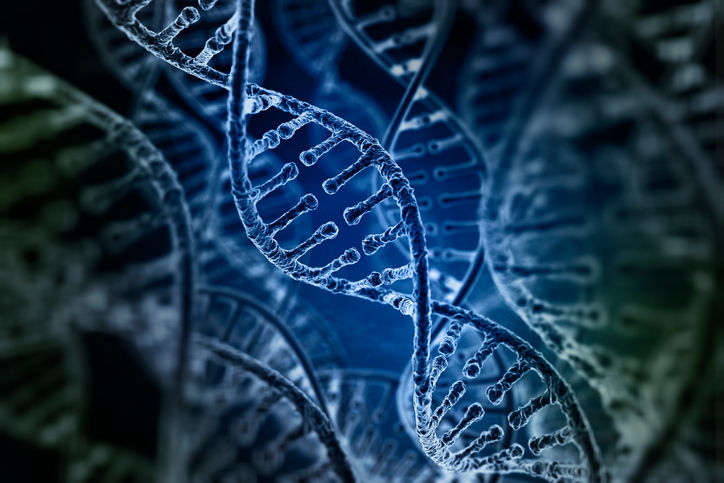Article by Dr. Raghuram YS MD (Ay) and Dr. Manasa S, BAMS
Vistabdhajirna is a type of ajirna – indigestion.
The word Vistabdhajirna is made up of two terms:
– Vistabdha – means clogged or constipated, something that is blocked,
– Ajirna – food indigestion

So, Vistabdhajirna = Vistabdha + Ajirna = a type of indigestion caused by obstruction in the channels or constipation or blockages (in the colon). This happens “when the agni – digestive fire is influenced by an increase in vata.”
So, Vistabdhajirna is a type of indigestion caused by increased vata, when vata influences agni – digestive fire (vishamagni) and interferes with digestion by (or after) causing obstruction in the channels – mainly in the colon, which is a primary seat of vata. On the other hand, when vata influences agni and the digestion process, indigestion occurs, which further leads to vistambha, i.e. constipation and blockages in the colon.
The vata relationship and the mechanism/pathogenesis of vistabdhajirna
विष्टब्धमनिह ध्मानसादकृत्।॥अ.हृसू.८/२६॥
When aggravated vata influences agni, it causes vidagdha ajirna. Here the fire is very fluctuating in nature i.e. vishama, sometimes it digests food properly and sometimes not, sometimes it causes easy bowel movement and sometimes it does not. So basically the vata influenced digestive fire is erratic and unpredictable in nature.
We know that the initial process of digestion in the stomach and small intestine takes place due to the coordinated functions and action of the subtypes of the three doshas, i.e., samana vata, pachaka pitta and kledaka kapha. There needs to be perfect chemistry between these stomach doshas for digestion to occur properly. Abnormal increase in one dosha subtype here will influence the others abruptly and lead to indigestion and other related diseases. So, although the digestive fire is influenced by any dosha at any given time, all three doshas will be collectively involved in the manifestation of ajirna, its symptoms and complications.
In this context, we will limit our discussion in relation to aggravated vata influenced digestive fire.
When vata influences the digestive fire, the fire becomes erratic in nature. We know that agni is found in the stomach in the form of pitta. Agni is located in Pitta and Pitta represents Agni.
When pachaka pitta is influenced by vata, two types of events can occur, due to the erratic nature of vata.
– Event 1: Vata can intensify the action of pitta and therefore agni, as expected. In such a case, digestion appears to be adequate.
– Event 2: Alternatively, if vata increases in all its properties, and if pitta or agni is milder than vata in that case, pitta would decrease. Increasing the shita (cold), ruksha (dry) and khara (rough) qualities of vata can destroy or pacify the ushna (heat), tiksna (intense or penetrating), snigdha (greasiness) and sara (flow) qualities of pitta. Here pitta and hence agni will decrease and hence digestion will be inadequate.
This is due to the influence of vishama – the unpredictable and fluctuating nature of vata over agni.
Increased vata will also cause a decrease in kapha in the stomach. This will decrease the buffer and balance in the stomach.
All these events can severely affect agni. Agni also becomes unpredictable. There is a greater “vata vibe” in the stomach. Increased vata will also cause constipation and blockages not only in the stomach but also in the entire intestine. It also causes vistambha – functional blocks of pitta/agni and kapha.
This will set the platform for the development of vistabdhajirna. Blockages and constipation caused by vata will further hinder the free flow of vata. Vata would again become retrograde (udavarta) and hinder all activities, including the digestion of food. This vicious cycle continues until vata overactivity is controlled through appropriate interventions.
Causes and mechanism
Excessive vata consumption aggravates foods and activities.
↓
Vata aggravation/vice in the stomach
↓
Increased vata qualities, mainly shita – cold, ruksha – dry and khara – rough qualities in the stomach.
↓
Influence of vata on agni, pitta and kapha
↓
Disturbance of balance in the stomach along with functional blockages of pitta and kapha.
↓
Agni becomes vishama: erratic and unpredictable in nature.
↓
This will lead to food indigestion.
↓
It causes constipation, blockages in the channels and functional blockages in the stomach, colon and other areas of the body.
↓
This is called vidagdhajirna.
Alternative path
Excessive vata consumption aggravates foods and activities.
↓
Vata aggravation/Vidation throughout the body and mainly in its primary seat, the colon.
↓
The movements of vata are hampered and it travels in abnormal pathways, mainly upward, which is its abnormal course and causes udavarta.
↓
Influence on Agni in the stomach and other stomach doshas.
↓
Disturbance of balance in the stomach along with functional blockages of pitta and kapha.
↓
Agni becomes vishama: erratic and unpredictable in nature.
↓
This will lead to food indigestion.
↓
This is called vidagdhajirna.
↓
It will worsen constipation and blockages.
Vishamagni and Vistabdhajirna
Vishamagni is a state of digestive fire influenced by vata. Here, due to the erratic and unpredictable nature of vata, the digestive fire will also become erratic and unpredictable. Sometimes food is digested properly and many times it is not. This type of erratic digestion of food is called vistabdhajirna, which can cause various types of physical and functional blockages and constipation in the body in the long term, if not addressed in time.
Causes of Vistabdhajirna
– Vata vriddhikara nidana – etiological factors that would lead to increased vata
– Kapha kshayakara nidana – etiological factors that would cause a decrease in kapha
– Ajirna nidana – etiological factors mentioned to cause indigestion
– Agnimandya nidana: etiological factors mentioned cause weakness of the digestive fire and, therefore, the digestive capacity of the individual.
– Manasika nidana – conditions like shoka – grief, bhaya – fear, etc. They could increase vata and this vata can cause ajirna.
Preventive measures
Avoiding the above mentioned etiological factors/causes of ajirna in general and vistabdhajirna specifically are themselves the best preventive measures.
Symptoms of Vistabdhajirna
विष्टव्येशूलमाध्य
मलवाताप्रवृत्तिश्च् तम्पीडनम्।। मा.नि.६/१२।।
Symptoms of Vistabdhajirna are mentioned below:
– Shula – pain in the abdomen, colic.
– Adhmana – distension of the abdomen – tympanitis
– Vividha vata Vedana – symptoms and pains of increased vata
– Mala apravritti – non-elimination of feces – constipation
– Vata apravritti – non-elimination of flatus/farts
– Stambha – rigidity, entrapments
– Moha – illusion/unconsciousness
– Anga pidanam – pain in body parts
Acharya Vagbhata mentions the following symptoms of Vistabdhajirna:
– Shula – colic, abdominal pain.
– Vibandha – constipation
– Adhmana – distension of the abdomen / tympanitis
– Sada – deterioration or slowing down of the functions of the stomach, colon and other organs in general.
Vistabdhajirna Treatment Principles
Nidana Parivarjana
Keeping away the factors causing ajirna in general, vistabdhajirna specifically and those causing aggravation of vata is the key to success in comprehensive vistabdhajirna treatment.
Swedana is the main therapy.
विष्टब्धेस्वेदनंभृशम्॥अ.हृ.सू.८/२७॥
Swedana – Acharya Vagbhata has just specified swedana – sweating therapy to treat vistabdhajirna. Probably the untold secret is also the use of snehana, unctuous treatments that form suitable and effective combinations with swedana.
Vagbhata is probably indicating swedana “only”, because in mild to moderate conditions or pre-Vistabdhajirna conditions, sweating alone would suffice. Swedana is a therapy that not only provides heat and produces sweating, it is also anti-vata as it is a heat therapy and together with snehana it is a lethal weapon to combat aggressive vata. In most cases it would be enough. Vagbhata is probably also indicating this therapy for indigestion caused by vata, which presents symptoms of vistabdhajirna along with constipation when the symptoms do not worsen, no serious vata related disorders or complications have occurred. Swedana is also effective in relieving cold, stiffness and heaviness.
If Vistabdhajirna does not respond to swedana, the other aggressive measures mentioned below can also be skillfully put into practice:
– Snigdha virechana – unctuous purgation
– Gudavarti – suppositories
– Asthapana Vasti – decoction enemas
– Anuvasana/Matra Vasti – unctuous/lubricant enemas using medicated oils and ghee
– Foods rich in Sneha – medicated fats, Vicharana Sneha – unctuous materials mixed with food, Nitya Snehana – daily administration of unctuous substances in small quantities
– Foods rich in sweet, sour and salty flavors.
Other considerations
– Ajirna Chikitsa: The general line of treatment of ajirna should be adopted which includes food, medicines, therapies and lifestyle changes according to the disease and the doshas involved.
– Agnimandya Chikitsa – Agnimandya treatment principles should also be considered and implemented.
– Vishama Agni – Aggravated Vata influenced digestive fire will be too erratic. This agni must be addressed.
– Vata Vriddhi Chikitsa – It is important to combat the aggravation of vata and take measures to balance it.
– The treatment principles of Vata Vyadhi, Amashayagata Vata, Pakvashayagata Vata and Udavarta and Gulma (Vataja Gulma) can also be considered.



